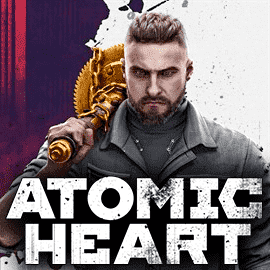Atomic Heart: FSR 2.2 vs. DLSS 2 vs. DLSS 3 Comparison Review
Source: Tech Power Up added 19th Jun 2023Introduction
Atomic Heart was released on February 21st and on launch day the PC game had support for NVIDIA’s DLSS Super Resolution (DLSS 3.1), NVIDIA’s DLSS Frame Generation (also known as DLSS 3), and AMD’s FidelityFX Super Resolution 1.0 (FSR 1.0). After more than three months, the game’s developer Mundfish has now enabled official support for AMD’s FidelityFX Super Resolution 2.2 (FSR 2.2) with the release of the 1.7.0.0 patch. It’s important to note that unlike other titles, Atomic Heart has completely removed support for FSR 1.0 with the FSR 2.2 patch, similar to what was done in some titles during the transition from NVIDIA DLSS 1.0 to DLSS 2.0. In order to run this game at maximum graphics settings and reasonable framerates at native resolution, quite a powerful GPU is required, which is why upscaling solutions are so important. But depending on the game, there are subtle differences in the implementation of NVIDIA’s DLSS Super Resolution (DLSS 3.1), NVIDIA’s DLSS Frame Generation (also known as DLSS 3) and AMD’s FidelityFX Super Resolution 2.2 (FSR 2.2), so we are keen to have a look at these temporal upscalers in this game.
Below, you will find comparison screenshots at 4K, 1440p, 1080p, and in different DLSS and FSR 2.2 quality modes; the TAA and DLSS Frame Generation screenshots are also available in the dropdown menu. For those who want to see how DLSS Super Resolution, DLSS Frame Generation and FSR 2.2 perform in motion, watch our side-by-side comparison video. The video can help uncover issues like shimmering or temporal instability, which are not visible in the screenshots.
All tests were made using a GeForce RTX 4080 GPU at Max graphics settings: motion blur, chromatic aberration and depth of field were disabled for better image viewing. DLSS Super Resolution in this game shipped with version 3.1.1 and DLSS Frame Generation shipped with version 1.0.3.
Screenshots
Side-by-Side Comparison Video
Conclusion
In Atomic Heart, the TAA, DLSS and FSR implementations all use a sharpening filter in the render path without the ability to tweak the sharpening values through separate sliders. Each upscaling and anti-aliasing solution is using high sharpening values, set by the developers, which might look oversharpened in most sequences of the game, especially at lower resolutions, however, the sharpening filter does not cause any negative side effects or artifacts during gameplay.
Atomic Heart is a fast paced first person shooter, so when using any temporal upscaling solutions, the temporal stability of the image is key to enjoyable gameplay. When using DLSS, the image was stable in motion in Quality modes and the level of detail rendered in vegetation and tree leaves is improved in comparison to the in-game TAA solution, however, the DLSS implementation struggles to render the power lines correctly, resulting in quite noticeable shimmering across all resolutions and quality modes, and shimmering is visible even when standing still. Only the FSR 2.2 image manages to render the power lines correctly in this game.
Speaking of FSR 2.2 image quality, the FSR 2.2 implementation comes with noticeable compromises in image quality—in favor of performance in most sequences of the game. We spotted excessive shimmering and flickering in motion on vegetation, tree leaves and thin steel objects, which might be quite distracting for some people. While the amount of shimmering is less pronounced in comparison to the average FSR 2.1 implementation, shimmering is clearly more visible than in either the in-game native TAA or DLSS image output. Also, there is quite noticeable shimmering issues on weapon scopes, which glow brightly and blink in motion, especially at lower resolutions. The second-most-noticeable difference in the FSR 2.2 implementation compared to the in-game TAA or DLSS solution is a softer and less detailed overall image quality, which is especially visible with grass and vegetation in general.
The NVIDIA DLSS Frame Generation implementation is excellent in this game, the overall image quality is mostly impressive. Even small particle effects, such as different varieties of the enemy’s laser abilities, are rendered correctly, even during fast movement. However, as with some other DLSS Frame Generation games that we’ve tested having issues with the in-game on-screen UI, which had a very jittery look—the DLSS Frame Generation implementation in Atomic Heart is also suffering from this issue. Interestingly, you can reduce these jittering problems by manually upgrading the DLSS Frame Generation version from 1.0.3 to 1.0.7. On a positive note, the DLSS Frame Generation implementation in Atomic Heart does not force you to enable DLSS Super Resolution, as some other Unreal Engine 4 games do.
Speaking of performance, compared to DLSS, FSR 2.2 has slightly smaller performance gains across all resolutions, while also producing more image quality issues. Most of the recent Unreal Engine 4 games have poor CPU multi-threaded performance, as the CPU usage is mostly single-threaded, and high-powered GPUs such as the GeForce RTX 4080 can end up CPU bottlenecked in some sequences of the game, even at 4K. In such a CPU limited scenario, very welcome help comes from the DLSS Frame Generation technology, which has the ability to bypass CPU limitations and increase the framerate. With DLSS Super Resolution in Quality mode and DLSS Frame Generation enabled, you can expect almost doubled performance at 1440p and 1080p, and during our testing, overall gameplay felt very smooth and responsive, we haven’t spotted any issues with input latency.
media: Tech Power Up
Related posts
Notice: Undefined variable: all_related in /var/www/vhosts/rondea.com/httpdocs/wp-content/themes/rondea-2-0/single-article.php on line 88
Notice: Undefined variable: all_related in /var/www/vhosts/rondea.com/httpdocs/wp-content/themes/rondea-2-0/single-article.php on line 88
Related Products
Notice: Undefined variable: all_related in /var/www/vhosts/rondea.com/httpdocs/wp-content/themes/rondea-2-0/single-article.php on line 91
Warning: Invalid argument supplied for foreach() in /var/www/vhosts/rondea.com/httpdocs/wp-content/themes/rondea-2-0/single-article.php on line 91
